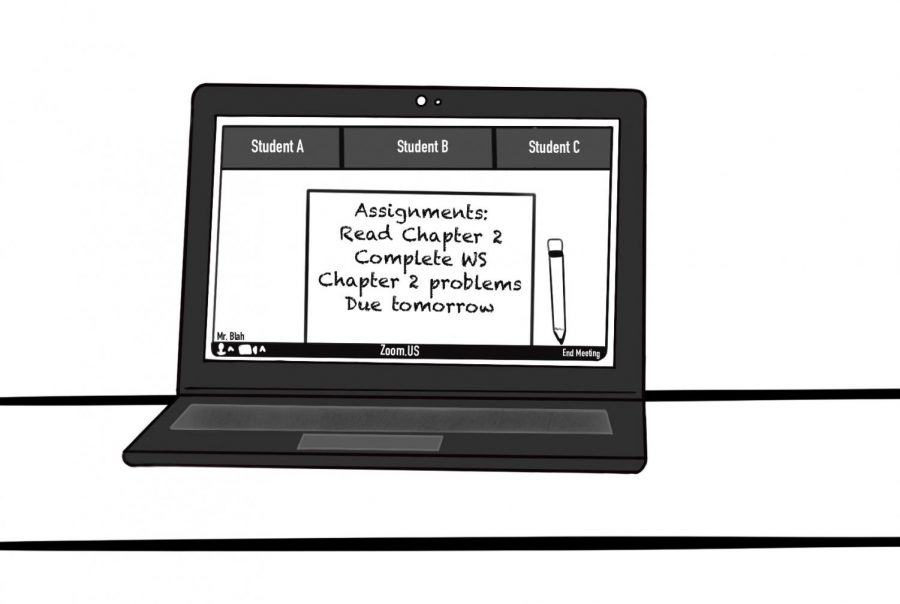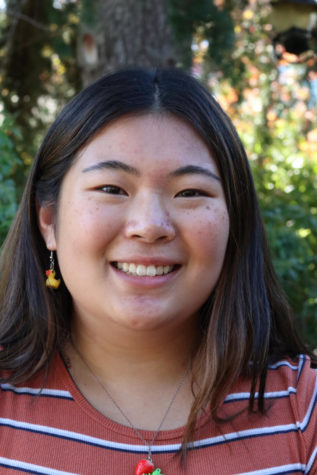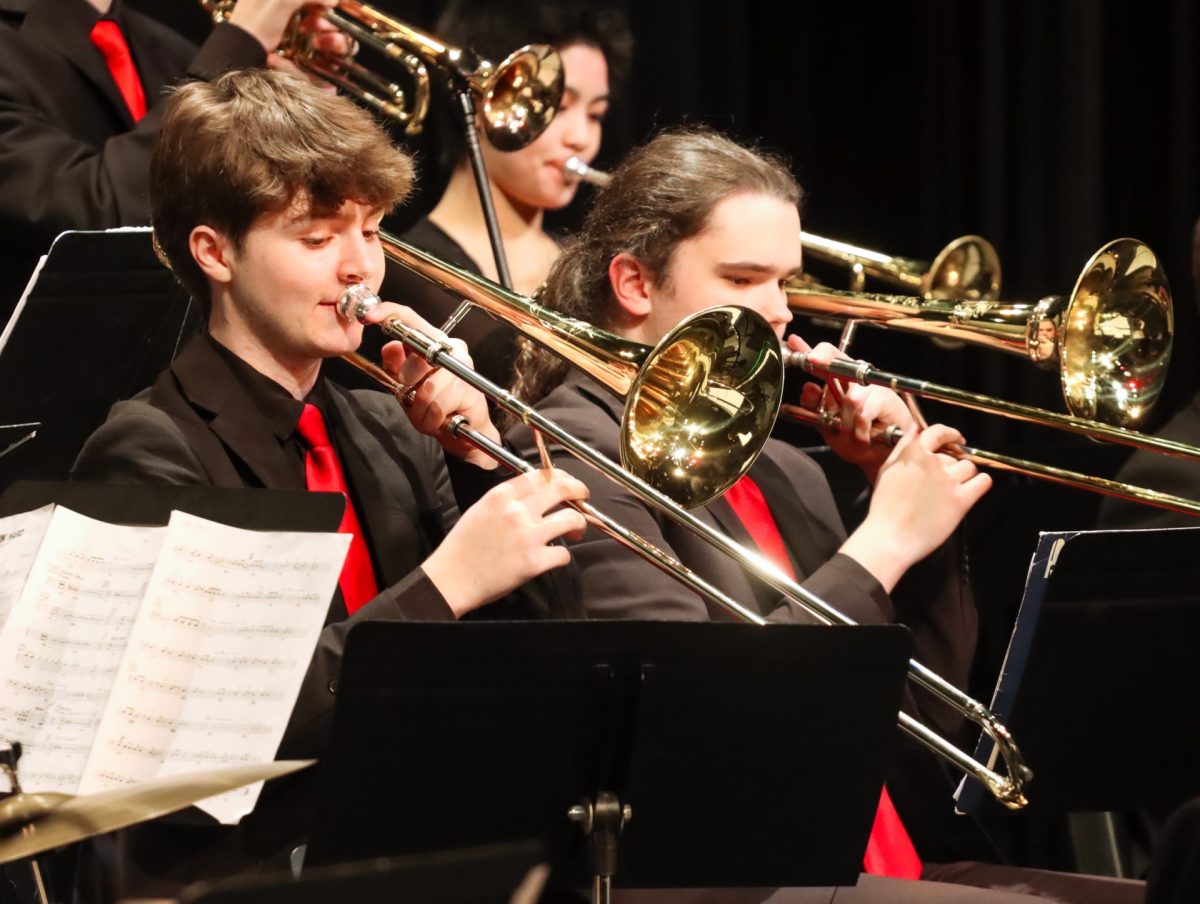As the first quarter of the 2020-21 school year is drawing to a close and teachers are wrapping up on their grades while students are diligently working on submitting their assignments, everyone is reflecting on this one of a kind quarter. The first 10 weeks of the school year have been jam packed with Zoom meetings, countless hours of both students and teachers staring at their computers and many technical difficulties. In general, most agree that the structure of the Continuous Learning 2.0 model this year has been far better than in the spring, but that does not mean that most think this current structure is as good as it could be.
While teachers and students alike share similar opinions concerning how online learning is going so far this year, both groups have drastically different views on the matter. Students view the surface of the remote learning experience in using the new Canvas interface and attending Zoom meetings, but so far they have relied heavily on their asynchronous learning time to shape their view. Teachers, on the other hand, are tasked with organizing all aspects of learning behind the scenes and adapting to the new ways of teaching remotely.
One of the teachers who has had to adapt to remote learning this quarter is Peter White, who teaches a variety of English classes for multiple grades at MTHS. Many may think that English classes are some of the easiest to transfer to an online model but even in this case White has been struggling.
In a normal year, White would have separated the work from his honors and his regular classes by this point, beginning to increase the speed of the course for his honor students. But, this year even if the honors classes are sped up, it is still not making up for lost time.
“I would say that progression in class is 50% slower than usual,” White said.
Usually by the start of second semester, his honors classes would be separating from the regular classes’ work and beginning the Beowulf unit. Due to the unforeseen circumstances and the nature of remote learning, his honors classes are still stuck in a short story unit. White predicts that this unit will take about a month to complete, which will push his usual lessons plans back by at least one month.
With only 25 minute periods of synchronous learning time each day and many classes already falling behind schedule, teachers have had to make the difficult decision of picking and choosing what material is the most crucial for their students.
“I’ve also had to cut out some of my work,” White said. “but it helps to determine which are the most important aspects to take away from each lesson.”
But who is the curriculum going to, why it’s students of course! Students are in school to learn and to benefit from having an organized curriculum in order to prepare them for their plans after high school. In these trying times, teachers have had to not only help their students learn new material from their homes but also help to engage them in the virtual classroom.
“I’ve been talking to classes about different ways to get them more involved,” White said. “I’ve started to ask them about ideas about how to get kids more involved and I have been implementing what they have suggested which has been going pretty well!”
Despite some of the success that has come out of White’s classes, there is still difficulty getting unmotivated students to do their work and engage in activities.
“The job of the teacher is to motivate the students to do the work, half of our job is a sales pitch,” White said. “But during these times it is easier to hide, you can mute your camera and your mic, it is hard to find a balance of getting kids to participate and not forcing them.”
Throughout these difficult times of participation among students and teachers attempting to educate students in an organized manner, even the little things such as a student turning on their camera helps teachers feel as if their students are really there.
“I miss the kids, when a kid turns on their camera a wave of gratitude comes over,” White said. “It feels a little sad that someone turning on their camera makes me happy, because teaching can be like speaking into a void sometimes.”
As difficult as many teachers find teaching a virtual classroom of black screens, many are still putting all of their passion into teaching their students while struggling with the new programs they’ve had to use.
John Traxler, who teaches both regular and AP Chemistry courses at MTHS, shares similar struggles to White as he tries to navigate the world of teaching in a remote setting.
“It’s a totally different teaching experience,” Traxler said. “My class was all about getting up and out of your seat and doing live chemistry. I am still able to do live demos but it isn’t the same.”
The time Traxler spends working is the same as previous years, but most of his time is now dedicated to sending eMails back and forth, as well as learning new technology to better educate his students. But, one of the things he spends a lot of time on this year is the new learning management system, Canvas, which he hasn’t had the best experience with so far.
“Canvas isn’t great in terms of correcting, and things don’t always sync… grading is a constant nightmare,” Traxler said. “Students and I are constantly having issues, so I just help as much as I can, and just accept that it is what it is.”
As many other teachers, Traxler misses his students intensely. He misses getting to watch his students as they progress and grow throughout the school year alongside each other. Traxler, along with many of his peers, are frustrated that they are not able to help their students as much as they would like to during these difficult times.
The end of the first quarter has proven to provide many challenges for students, as well as for teachers trying to navigate a never before seen learning environment. With COVID-19 cases on the rise throughout the state of Washington and the entire nation, there is a likely chance that many students will continue to learn from home for the remainder of the 2020-2021 school year, which requires both teachers and students to continue adapting to their ever changing situation. As seen through the spring and the experiences in the fall thus far, the dedicated teachers at MTHS have proven that they are up to any challenges that may come their way this year, and are prepared to teach their students through thick and thin.









Kalli Samaltanos • Jan 28, 2021 at 2:12 pm
I found this article via pacemaker winners and just wanted to express how TALENTED y’all are!! Keep up the fantastic work. We’re rooting for you all the way down here in GA!
Much love, Kalli from the ODYSSEY Media Group
http://www.odysseynewsmagazine.net/